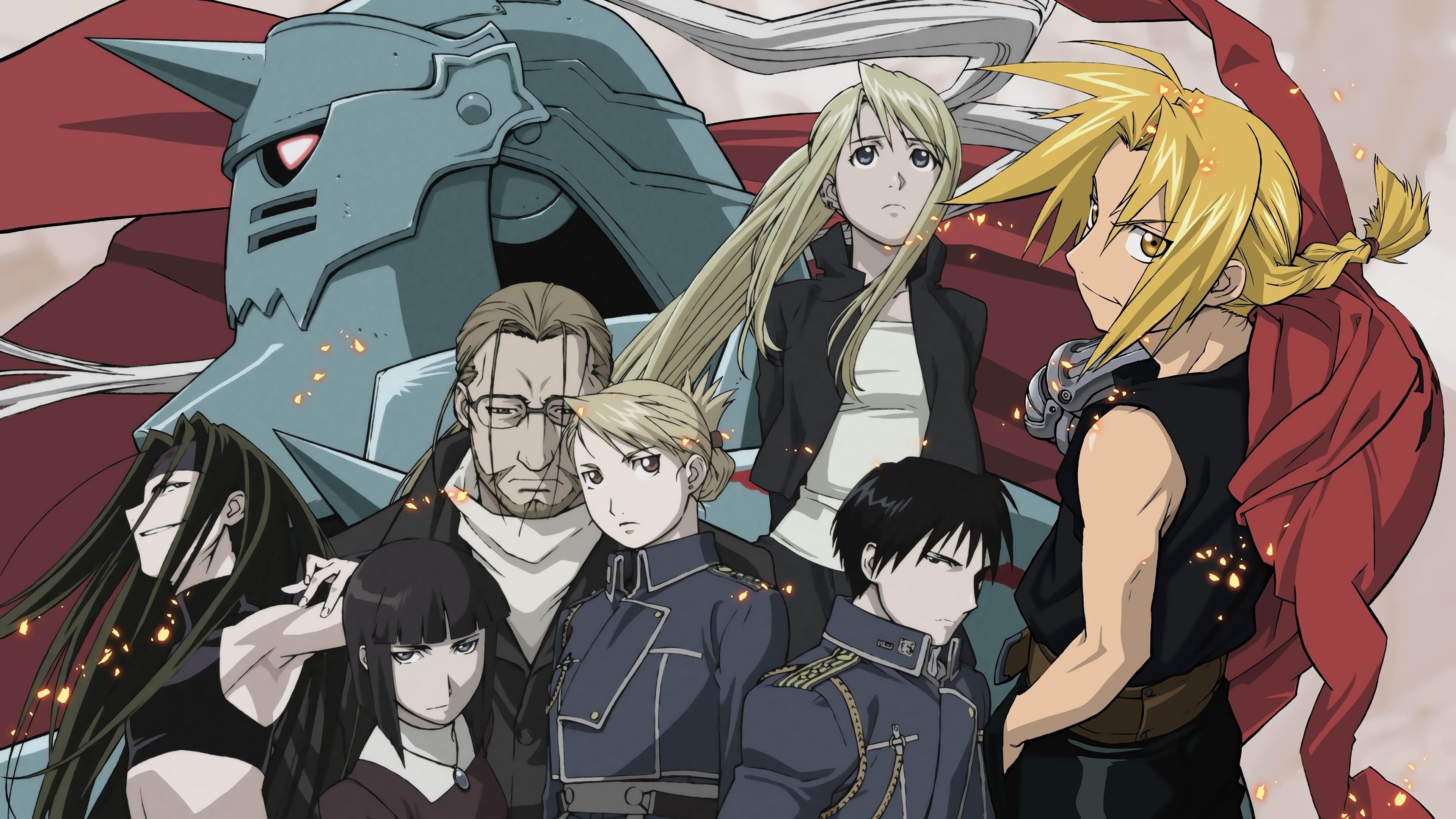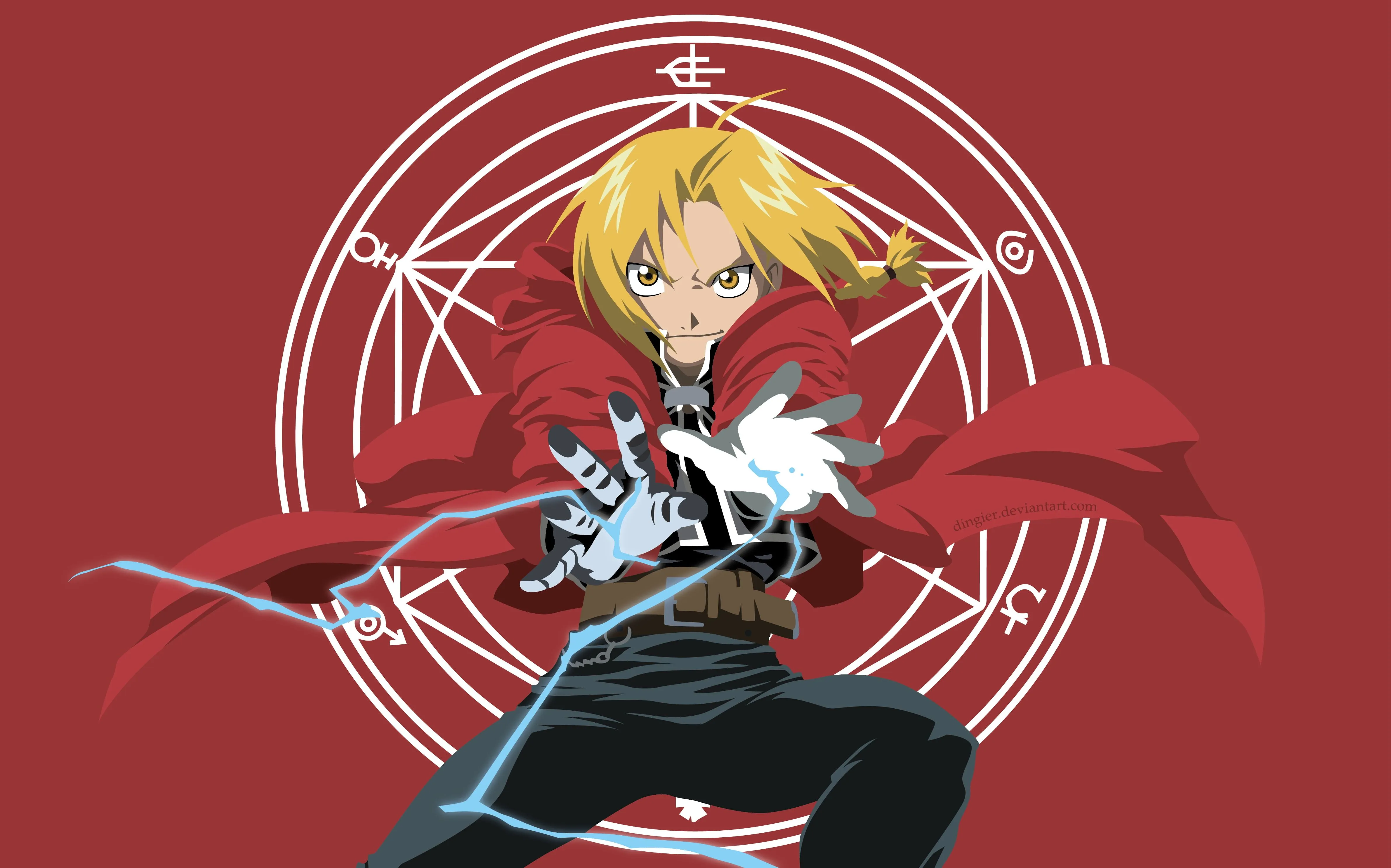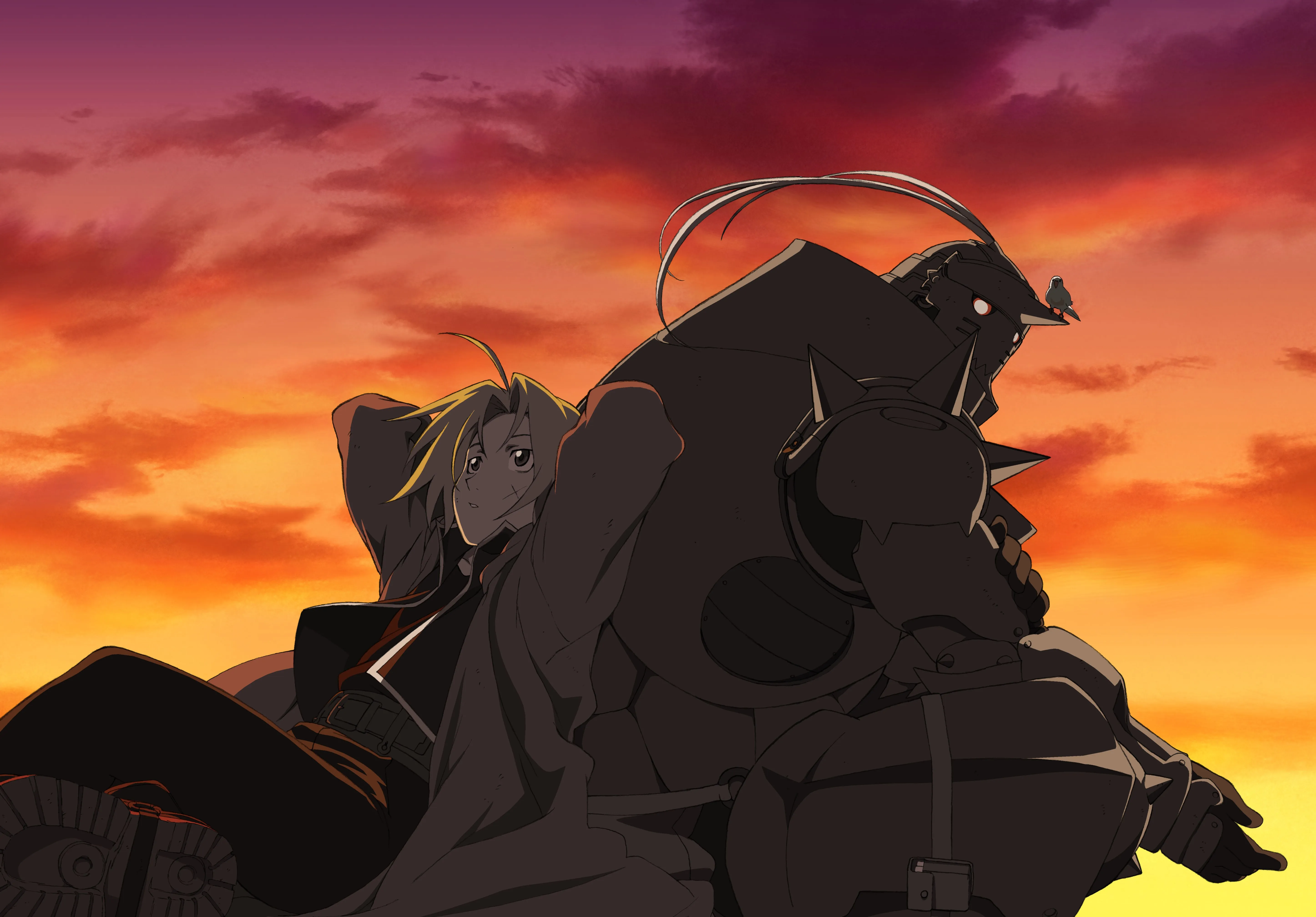
Fullmetal Alchemist: Masterful Story, Complex Characters, Unforgettable Action
Fullmetal Alchemist manga, crafted by the skilled Hiromu Arakawa, stands as a beacon in the world of manga, captivating readers globally with its compelling narrative and rich characters.
Plot Synopsis
Within the pages of Fullmetal Alchemist, readers embark on a riveting journey through the mystical world of alchemy. The narrative centers around two brothers, Edward and Alphonse Elric, who, in their pursuit of forbidden alchemical knowledge, suffer a tragic consequence. In a desperate attempt to resurrect their deceased mother, they inadvertently lose parts of themselves—Edward loses a limb, and Alphonse loses his entire body, his soul bound to a suit of armor.
Undeterred by their losses, the brothers set out on a quest to find the Philosopher’s Stone, a mythical artifact said to amplify alchemical abilities and restore their bodies. Their journey unfolds against the backdrop of Amestris, a nation entrenched in political intrigue, military machinations, and the dark secrets of alchemy.
The Elric brothers encounter a myriad of characters, from skilled alchemists to homunculi—artificial beings created through forbidden alchemical practices. As they delve deeper into the mysteries of the Philosopher’s Stone, they uncover a sinister plot that threatens not only their world but the very fabric of reality.
Throughout the narrative, themes of sacrifice, redemption, and the consequences of playing with the fundamental forces of nature are expertly woven into the intricate plot. Edward’s determination to restore his brother’s body and Alphonse’s quest for identity provide emotional anchors to the high-stakes adventure.
As the brothers confront their own past mistakes, navigate the moral ambiguity of alchemy, and face formidable enemies, the plot evolves with unexpected twists and turns. The narrative masterfully balances action, drama, and character development, ensuring that each revelation adds depth to the overarching story.
Arakawa’s storytelling prowess is evident as she skillfully crafts a tale that not only explores the fantastical realm of alchemy but also delves into the very essence of humanity. Fullmetal Alchemist’s plot is a symphony of emotion, intellect, and suspense, captivating readers with its depth and unpredictability.
Read The Manga
Art and Illustrations

Arakawa’s artistic brilliance in Fullmetal Alchemist transcends the boundaries of traditional manga. Each panel is a meticulous composition, capturing the essence of the narrative with unparalleled detail and emotion. The characters come to life through her skillful strokes, their expressions conveying a spectrum of emotions that resonate with readers.
The visual storytelling in Fullmetal Alchemist is a feast for the eyes, seamlessly blending action sequences with moments of introspection. Arakawa’s ability to convey motion and intensity through her illustrations elevates the reading experience, immersing readers in the alchemical world with a visual intensity that mirrors the depth of the plot.
Beyond the characters, the world-building in Fullmetal Alchemist is brought to vivid life through the intricate backgrounds and atmospheric details. Whether depicting bustling cities or mysterious laboratories, Arakawa’s illustrations create a sense of immersion, inviting readers to explore the multifaceted universe she has crafted.
Themes and Symbolism
Fullmetal Alchemist goes beyond being a mere adventure; it is a narrative tapestry woven with profound themes and symbolism. Arakawa uses alchemy as a metaphor, exploring the ethical implications of wielding power and the consequences of tampering with the natural order. The transmutation circles and symbols become more than just alchemical tools—they are visual representations of the characters’ struggles and choices.
The narrative delves into philosophical themes, questioning the morality of human actions and the pursuit of knowledge at any cost. Themes of sacrifice, redemption, and the interconnectedness of life are intricately woven into the fabric of the story, adding layers of depth that resonate with readers on a profound level.
Symbolic elements, from the recurring motifs of the Philosopher’s Stone to the duality of the sun and moon, serve as narrative anchors. These symbols enrich the storytelling experience, allowing readers to decipher hidden meanings and draw connections between characters and overarching themes.
Arakawa’s masterful use of visual metaphors and symbolism transforms Fullmetal Alchemist into more than just a graphic novel; it becomes a philosophical exploration, inviting readers to reflect on the complexities of human nature and the consequences of our choices. The manga’s themes and symbols are not just embellishments but integral components that enrich the narrative and elevate it to a level of storytelling that transcends the boundaries of the medium.
Legacy and Influence

Fullmetal Alchemist’s impact extends far beyond the pages of a manga; it has etched itself into the annals of cultural significance, leaving an indelible mark on the manga and anime landscape. Hiromu Arakawa’s creation has not only garnered a dedicated fanbase but has reshaped the industry, setting a standard for storytelling and artistic prowess.
The manga’s influence on subsequent works within the genre is palpable, with aspiring manga artists and writers citing Fullmetal Alchemist as a source of inspiration. Arakawa’s seamless blend of intricate plotlines, well-developed characters, and thought-provoking themes has become a benchmark for excellence in storytelling.
The global recognition and acclaim received by Fullmetal Alchemist catapulted it beyond the confines of niche fandoms. The series has become a cultural touchstone, referenced in discussions about the potential of manga to transcend cultural and linguistic barriers. Its success paved the way for a broader acceptance of manga as a legitimate form of literary and artistic expression on the global stage.
Adaptations, including the widely celebrated Fullmetal Alchemist: Brotherhood anime, further solidified the series’ legacy. The faithful adaptation not only introduced the narrative to a new audience but also set a standard for anime adaptations that remains unparalleled.
The fandom surrounding Fullmetal Alchemist is more than just a community; it is a testament to the series’ ability to resonate with diverse audiences. The passionate discussions, fan theories, and creative expressions inspired by the manga showcase its enduring appeal and cultural relevance.
Arakawa’s impact is not limited to the realm of entertainment; Fullmetal Alchemist’s exploration of morality, sacrifice, and the consequences of power has sparked academic discussions and critical analyses. The series has become a subject of study in literature and philosophy courses, demonstrating its significance in broader intellectual discourse.
In essence, Fullmetal Alchemist’s legacy is not confined to the fictional world it created but extends into the real world, shaping the way we perceive and appreciate manga as a powerful medium for storytelling and cultural expression. Its influence continues to ripple through the industry, leaving an enduring imprint that will undoubtedly inspire future generations of storytellers and artists.
Buy Merchandising
Fullmetal Alchemist: Brotherhood

The legacy of Fullmetal Alchemist takes a remarkable turn with the anime adaptation, Fullmetal Alchemist: Brotherhood. This rendition stands as a testament to the manga’s enduring impact, capturing the essence of Hiromu Arakawa’s narrative while bringing its own unique strengths to the forefront.
In contrast to the 2003 adaptation, Brotherhood faithfully follows the manga’s storyline, offering fans a more comprehensive and true-to-source experience. The decision to adhere closely to the original narrative not only pleased existing fans but also introduced a new audience to the richness of Arakawa’s storytelling.
One of the standout features of Brotherhood is its exceptional animation quality. The visuals are not just a replication of the manga; they are a dynamic and visually stunning realization of Arakawa’s world. The fluidity of action sequences, the emotional resonance in character expressions, and the attention to detail in each frame contribute to an immersive viewing experience.
Brotherhood also excels in character development, allowing each member of the expansive cast to shine. The exploration of the Elric brothers’ journey, coupled with the nuanced portrayals of supporting characters, adds depth to the narrative. Viewers witness not only the physical challenges faced by the protagonists but also their internal struggles and growth.
The pacing of Brotherhood is a masterclass in storytelling, maintaining a balance between intense action and poignant moments. The series manages to capture the complexity of the manga’s plot without sacrificing coherence, keeping viewers engaged from start to finish.
The critical and commercial success of Fullmetal Alchemist: Brotherhood further cements the series’ status as a cultural phenomenon. It has become a gateway anime for many, introducing them to the world of Japanese animation and inspiring a new wave of anime enthusiasts.
While the 2003 adaptation had its merits, Brotherhood stands as the definitive animated rendition of Arakawa’s work. Its impact goes beyond being a mere adaptation; it is a celebration of the original manga’s brilliance, expanding the reach of Fullmetal Alchemist to a broader audience and solidifying its place in the pantheon of anime classics.
Fullmetal Alchemist in Popular Culture
Fullmetal Alchemist has transcended the confines of manga and anime, seamlessly weaving itself into the fabric of popular culture. Hiromu Arakawa’s creation has become more than a narrative; it’s a cultural phenomenon with a far-reaching impact.
References to Fullmetal Alchemist abound in various forms of media, from subtle nods in other anime series to explicit homage in video games and television shows. Its iconic symbols, such as the transmutation circles and the concept of equivalent exchange, have become recognizable motifs that resonate beyond the anime and manga community.
The series’ influence extends to the realm of internet culture, where memes featuring Fullmetal Alchemist characters and quotes have proliferated. Memorable scenes, poignant quotes, and humorous moments have become part of the broader meme lexicon, connecting with audiences even outside the anime enthusiast circle.
The characters of Fullmetal Alchemist have become archetypes, inspiring cosplayers worldwide to don the iconic red coat of Edward Elric or embody the stoic presence of Alphonse Elric in their quest for the perfect cosplay. The characters’ distinct personalities and designs have left an enduring imprint on the cosplay community.
Beyond direct references, Fullmetal Alchemist has inspired creators in various fields. Musicians, writers, and artists have drawn inspiration from the series, incorporating its themes of sacrifice, redemption, and the consequences of power into their own works. This intertextuality showcases the depth of Fullmetal Alchemist’s impact on creative expression.
The series has also become a touchstone for philosophical discussions, with academic circles exploring its themes in literature and ethics courses. The moral dilemmas faced by characters and the exploration of alchemical principles provide a rich tapestry for intellectual discourse, solidifying Fullmetal Alchemist’s place in academic conversations.
In summary, Fullmetal Alchemist’s influence in popular culture is not confined to specific genres or demographics. It has permeated various facets of creative expression, from internet memes to academic discussions, leaving an indelible mark that speaks to its universal resonance and enduring relevance in the broader cultural landscape.
